You’re curious about headless ecommerce platforms–nice choice! Reading through the whole thing, you’ll only know if this is the perfect fit for you. Ready to explore? Let’s get started!
First, I explained what a headless ecommerce platform is,

Headless ecommerce platforms are powerful software solutions that allow businesses to centrally manage their online stores by integrating third-party systems through APIs.
So, why go headless? Traditional platforms need help to adapt to the constant changes in digital shopping. Headless cms ecommerce allows you to update the customer experience separately from your backend systems, creating smooth, multi-channel experiences without the usual limitations.
As we move into 2025, headless e-commerce is becoming a must-have for brands aiming to stay flexible and ahead, especially with ecommerce expected to make up 24.5% of global retail sales.
If headless ecommerce is on your mind for your brand, here’s everything you need to know before building a headless ecommerce website. We’ve listed the top 10 ecommerce platforms for 2025, each offering unique advantages to help you build a flexible, scalable, and engaging the best headless commerce store.
How Does a Headless Ecommerce Platforms Work?
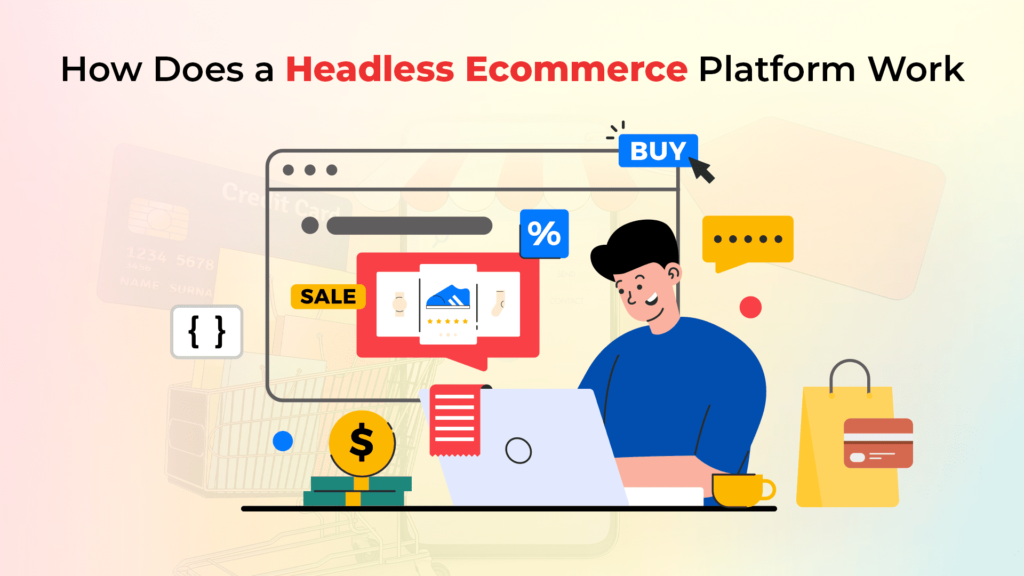
We’ve spent some time understanding what a headless ecommerce platform is and why to go headless. now, let’s explore how it works. A headless cms ecommerce platform works by separating the front end, where customers interact with your store, from the back end, which manages all the data and operations.
This setup allows the front end to focus on creating a smooth shopping experience while the back end takes care of things like product management, order processing, and payments. By using APIs, these headless platforms enable easy communication between the two parts.
This means developers can build custom front-end designs with different ecommerce technologies, giving your store a unique look that reflects your brand. Plus, this flexibility allows businesses to quickly respond to market changes and add new sales channels as needed.
Overall, headless ecommerce helps brands create engaging shopping experiences while keeping everything running smoothly behind the scenes, providing them with more choices and greater control to manage their headless ecommerce stores.
Read More: Headless Commerce Solutions: How to Build in Simple Steps
Top 10 Best Headless Ecommerce Platforms Examples In 2025
There are numerous e-commerce platforms on the market, each offering unique features and benefits. Among these, headless CMS solutions are gaining increasing popularity. When it comes to flexibility and scalability, the benefits of headless ecommerce stand out.
To make things easier for you, we’ve listed the top 10 headless ecommerce examples that can elevate your business.
1. Webnexs Headless Ecommerce Solution
Webnexs offers a wide range of headless ecommerce solution that provides businesses with maximum flexibility and scalability. Customized for both startups and large enterprises, Webnexs enables you to create fully customized, multi-channel shopping experiences. This solution is built with a decoupled ecommerce architecture, allowing businesses to innovate quickly while maintaining a smooth customer experience across platforms.
Features:
- Flexible theme customization options allow businesses to create a storefront that matches their unique brand, offering a personalized shopping experience for customers.
- Features like ratings and reviews engage customers, build trust, and encourage repeat purchases, driving customer loyalty.
- Multi-currency support enables businesses to cater to international customers, offering a seamless shopping experience across borders.
- Enables businesses to manage stock levels across multiple stores and easily assign orders, improving operational efficiency.
Benefits:
- Allows businesses to customized shipping rules based on location and other factors, optimizing delivery processes.
- Automates communications by providing pre-set templates for emails and invoices,
- Automatically calculates taxes based on product and location, ensuring accuracy and compliance with tax regulations.
Unique Advantages:
- Marketplace Integration for Create and manage personalized online marketplaces.
- Allows vendors to manage their own listings and commissions.
- Geo Location & Delivery Restrictions Manage region-specific shipping and delivery restrictions.
- POS and Mobile App Integration: Enable order placement through the POS and vendor panels, and integrate with a mobile app for better control and reach.
2. Wcart Headless Ecommerce Platform
Wcart offers a flexible and scalable headless ecommerce platform designed for businesses looking to build unique and customized online stores. With its API-driven architecture, Wcart allows you to integrate any front-end technologies continuously, ensuring complete control over the customer experience while maintaining powerful backend functionality.
Features:
- The single-page checkout and product filters create a streamlined and easy shopping experience, improving customer satisfaction and reducing cart abandonment.
- Features like social sharing and coupons & promotions help businesses increase product visibility, attract new customers, and drive higher sales.
- With multi-currency support and payment gateway integration, businesses can easily cater to international customers, offering a smooth and secure transaction process across borders.
- Built-in SEO-friendly tools help improve search engine rankings, driving organic traffic and making the business more discoverable online.
Benefits:
- Efficient and user-friendly system for handling order returns, offering customers a smooth process and detailed tracking.
- Integrates shipping services, simplifying logistics and making shipping more efficient.
- Enables businesses to define different access levels for admins and vendors, providing customized permissions and improving platform security.
Unique Advantages:
- Simplifies vendor commission tracking and payouts with batch payment features.
- Ensures a secure shopping experience with advanced features.
- Customize experiences based on customer location with precise geo-location functionality.
- Seamless integration with Google and Facebook product feeds for better advertising reach.
3. Shopify Headless Ecommerce Software
Shopify is one of the most popular ecommerce platforms, and its headless solution offers the flexibility of a decoupled architecture while maintaining the ease of use Shopify is known for. With Shopify, businesses can create custom storefronts, manage complex inventory, and integrate with various sales channels through its powerful API.
Features:
- API-driven headless ecommerce architecture.
- Multi-channel sales support including web, mobile, and social media.
- Flexible integrations with front-end frameworks such as React and Liquid.
Benefits:
- Easy to set up and scale for growing businesses.
- Access to Shopify’s powerful back-end tools for inventory management, order processing, and customer data.
- Quickly integrate with new front-end technologies to create a personalized shopping experience.
Unique Offering Advantages:
- Shopify’s extensive network of tools and apps allows businesses to streamline operations.
- Shopify’s easy-to-use interface makes it an excellent choice for businesses that want seamless headless ecommerce software without a steep learning curve.
- Trusted by millions of merchants worldwide for its reliability and scalability.
4. BigCommerce Headless Ecommerce Store
BigCommerce provides a highly scalable headless ecommerce solution designed for businesses that need flexibility and performance. Its API-driven architecture allows for integration with any front-end technology, offering businesses the freedom to design the ideal shopping experience for their customers.
Features:
- Smooth API integration with various front-end technologies.
- Built-in tools for inventory, order management, and customer relationships.
- Multi-channel integration for broader reach across different sales channels.
Benefits:
- Easily scale as your business grows, handling complex product catalogs and large traffic volumes.
- Utilize built-in back-end tools to streamline ecommerce operations.
- Reach customers across multiple sales channels with integrated marketing and sales tools.
Unique Offering Advantages:
- BigCommerce excels in handling both large and small businesses, offering customizable options for different market segments.
- It provides businesses with the ability to focus on design while ensuring the back-end processes are efficient and powerful.
- BigCommerce is designed for growth and adaptability, making it an ideal solution for enterprises looking to expand.
5. Magento (Adobe Commerce) Headless CMS solutions
Magento, now part of Adobe Commerce, is a strong open-source platform known for its flexibility and customization options. With a focus on enterprise-level businesses, Magento’s headless ecommerce platform offers a highly customizable environment for developers to easily build customized ecommerce stores.
Features:
- Open-source and highly customizable architecture.
- Integration with third-party tools and technologies through powerful APIs.
- Advanced product, order, and customer management features.
Benefits:
- Offers extensive control over store design and back-end processes.
- Ideal for businesses with unique or complex ecommerce requirements.
- Scalable architecture to support businesses of all sizes.
Unique Offering Advantages:
- Magento’s open-source nature allows for complete freedom and customization of the platform.
- A strong developer community ensures continuous innovation and improvement.
- Perfect for businesses that require an enterprise-level solution with deep customization.
6. Contentful Headless Ecommerce Sites
Contentful is a content management platform that focuses on delivering a smooth experience for content-rich ecommerce sites. With its API-first ecommerce, businesses can create dynamic, content-driven ecommerce sites that engage customers through personalized experiences across multiple channels.
Features:
- Content-first approach with flexible API integrations.
- Easy management of content across multiple platforms.
- Customizable workflows and multi-channel content distribution.
Benefits:
- Create personalized, content-rich shopping experiences for customers.
- Manage content across all digital touchpoints, ensuring consistency.
- Integrate with various front-end technologies to support business needs.
Unique Offering Advantages:
- Ideal for businesses that prioritize content marketing and want to integrate it with ecommerce.
- Offers strong flexibility in managing and delivering content, which is a critical component for personalized customer journeys.
- Ensures scalability, making it a great option for growing businesses that need to manage large content libraries.
7. Commercetools Headless Ecommerce Company
Commercetools is a cloud-native headless ecommerce platform that offers extensive API support for easy integration with various front-end technologies. It uses microservices architecture, which allows businesses to create customized solutions that are scalable and flexible to meet business needs.
Features:
- Microservices-based architecture for customizable solutions.
- Real-time data updates for inventory and order management.
- Scalable platform capable of handling large volumes of data and transactions.
Benefits:
- Choose only the services you need and integrate them with other systems, creating a highly flexible solution.
- React to market changes in real-time by providing updated product and order information.
- Grow your business quickly with a platform designed to handle high traffic and large data sets.
Unique Offering Advantages:
- Commercetools is designed for businesses that need high customization and want to implement a range of services that fit their needs.
- The microservices architecture allows for flexibility and scalability, enabling businesses to adapt to evolving market demands quickly.
- The platform offers businesses the tools they need to stay competitive in the fast-moving digital commerce space.
8. Elastic Path Headless platform
Elastic Path offers a fully customizable ecommerce platform that gives businesses complete control over their online shop. With a strong focus on omnichannel retailing, Elastic Path helps businesses integration, personalized experience across web, mobile, and other sales channels.
Features:
- API-first approach for seamless front-end and back-end integration.
- Customizable workflows to fit unique business needs.
- Omnichannel support across multiple platforms and devices.
Benefits:
- Build custom ecommerce solutions that cater to specific business needs and customer experiences.
- Deliver a seamless omnichannel experience, allowing customers to interact with your business.
- Scale your business with Elastic Path’s highly customizable and flexible platform.
Unique Offering Advantages:
- Elastic Path is ideal for businesses looking to deliver a unified, omnichannel customer experience.
- It offers unmatched flexibility for creating customized ecommerce solutions without limiting business operations.
- The platform is built to handle complex, enterprise-level ecommerce requirements.
9. Salesforce Commerce Cloud best Headless Ecommerce option
Salesforce Commerce Cloud is a cloud-based headless ecommerce platform that provides businesses with a range of tools for creating personalized customer experiences. It integrates seamlessly with Salesforce’s CRM, giving businesses deep insights into customer behavior and preferences.
Features:
- Integration with Salesforce CRM for enhanced customer data insights.
- AI-powered features for personalized recommendations and experiences.
- Multi-channel support including web, mobile, and in-store.
Benefits:
- Use AI and customer data to personalize the shopping experience and drive conversions.
- Seamlessly integrate with Salesforce CRM to leverage customer insights and improve customer service.
- Scale easily with a platform built for high performance.
Unique Offering Advantages:
- The deep integration with Salesforce CRM allows businesses to leverage customer data for personalized experiences.
- AI-powered features enhance the ability to deliver targeted promotions and offers based on customer behavior.
- Perfect for businesses already using Salesforce for customer
10. VTEX headless ecommerce architecture
VTEX is an innovative headless ecommerce platform that empowers businesses to manage dynamic site, omnichannel online experiences. With its flexible architecture, VTEX supports scalability and customization, making it an ideal choice for businesses looking to stay competitive.
Features:
- Grows with your business and allows for easy customization.
- Combines online and offline sales channels for a consistent customer journey.
- Built-in tools make it easier for teams to work together.
Benefits:
- Separate front-end and back-end for unique designs.
- Syncs sales across different platforms.
- Connects with other tools and systems.
Unique Offering Advantages:
- Supports easy team work and faster development.
- Brings together sales, orders, and marketplace in one place.
- Adapts quickly to new needs and market changes
Key Benefits of Headless ecommerce Platforms
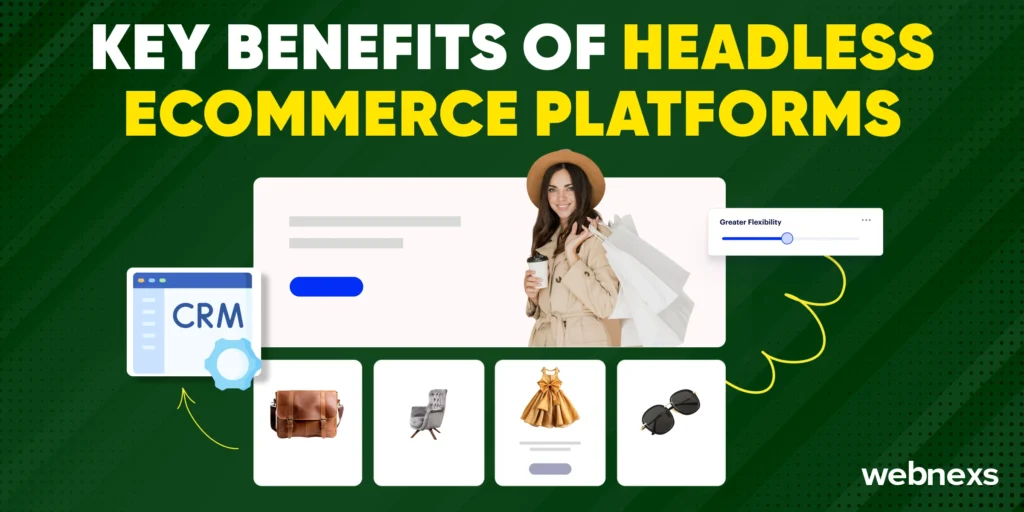
Let’s explore the key benefits of using a headless ecommerce platforms:
- Greater Flexibility
- Allows for customizing each part of the online store independently, so you can choose the best tools and design a unique experience.
- Makes it easier to tailor shopping experiences to meet specific customer needs without traditional platform limitations.
- Built for Growth
- Expands easily as your business grows, with options to add new features, products, and sales channels.
- Scales without major update, allowing you to focus on reaching more customers and adapting quickly to market changes.
- Future-Ready Approach
- Adapts to new technology trends, keeping your platform updated and competitive.
- Helps you stay relevant and flexible, offering fresh shopping experiences to match evolving customer expectations.
- Better Support for Multi-Channel Selling
- Makes it easier to create a consistent shopping experience across web, mobile, and social channels.
- Helps build a stronger brand presence and keeps customers coming back, no matter where they shop.
- Effortless Integration with Other Systems
- Connects smoothly with tools like CRMs, payment providers, and other essential systems.
- Simplifies daily operations and improves your ability to respond quickly to customer needs.
How Much Does Headless Ecommerce Cost?
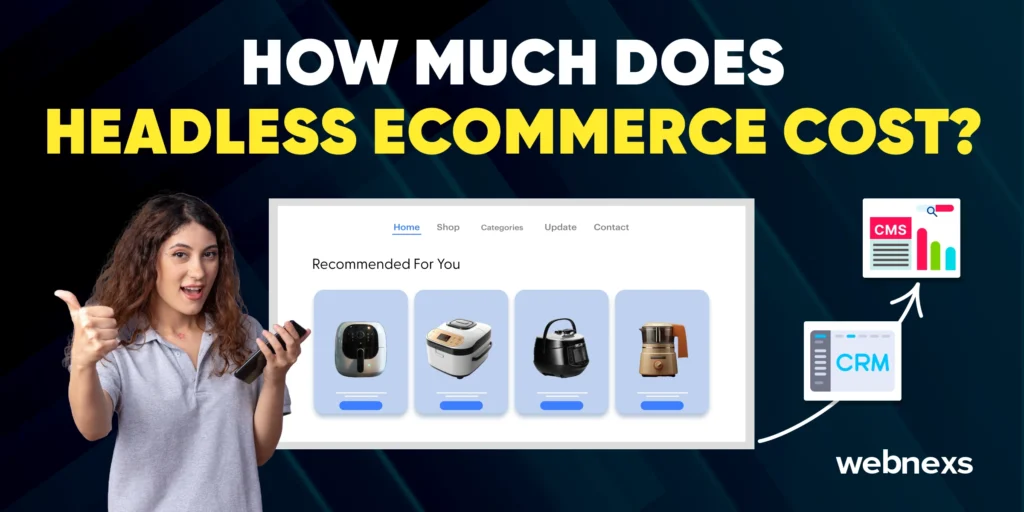
We’ve explored what headless ecommerce is, how it works, and the top headless commerce examples, along with their benefits. Now, let’s explore the most important question: How much does headless cost?
Well, it’s not exactly cheap, but it’s worth it. The initial setup cost depends on how much you want to customize things. A custom-built solution will cost more. But what you’re really paying for is the ability to have full control and flexibility over your e-commerce platform.
Then, there’s the ongoing maintenance. Like any system, headless ecommerce needs regular updates and integrations with other tools like your CMS, CRM, or PIM. These tools also come with their costs, but they help make everything run smoothly and keep your platform ready for the future.In short, while the cost might seem high at first, it’s a smart investment for long-term growth. With a headless ecommerce structure, you get the flexibility and scalability to grow and adapt as your business evolves.
5 Key Factors Influencing Cost in Headless Ecommerce Solutions
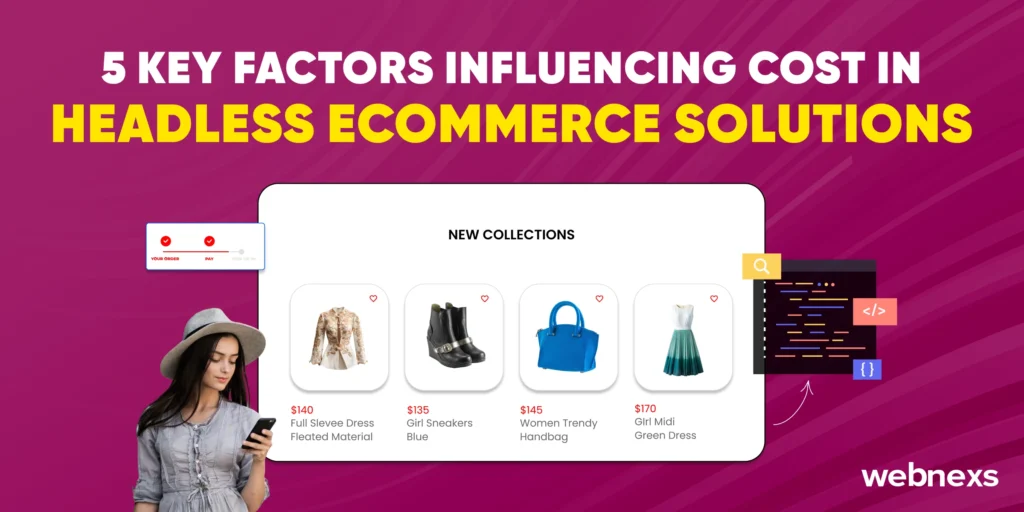
When you’re considering a headless ecommerce solution, it’s important to understand what can affect the overall costs. Here are five key factors to keep in mind:
- Platform Complexity: More advanced headless platforms with extra features can be pricier. Choose one that fits your needs without unnecessary extras.
- Integration Needs: Connecting to third-party services (like payment processors or inventory tools) adds costs. Focus on essential integrations.
- Customization Requirements: Customizing your platform for branding and user experience can increase costs. Balance essential features with custom needs to control expenses.
- Hosting and Maintenance: Separate hosting and maintenance costs can vary. Managed services may offer support but at a higher price.
- Development and Implementation: Design, coding, and testing can drive up costs. If you lack internal resources, hiring external developers can further increase the budget. Plan ahead to manage these expenses.
5 Main Reasons for the Rise of Headless Ecommerce Platforms
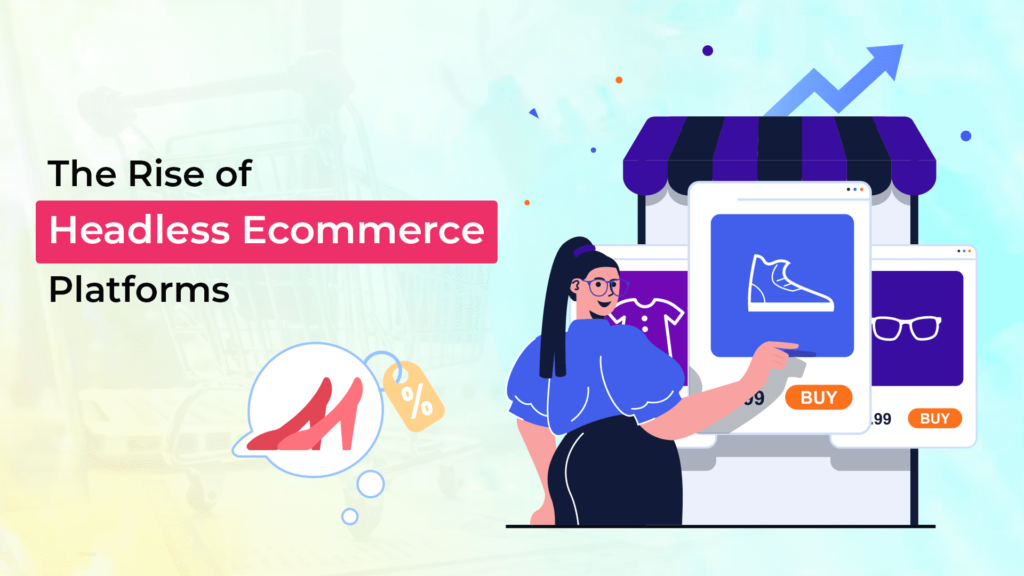
Headless ecommerce platforms are gaining traction for good reason. Let’s take a closer look at why so many businesses are turning to this innovative approach:
- Enhanced Flexibility
One of the standout benefits of headless commerce is its flexibility. By decoupling the front end from the back end, businesses can select the best tools for each part of their operation. This means they can quickly adapt to changes in the market and respond to customer needs without being tied down to a specific system.
- Seamless Multi-Channel Experience
Today’s shoppers use a variety of channels like websites, mobile apps, and social media to interact with brands. best headless commerce sites create a smooth experience across all these touchpoints. This consistency not only enhances customer satisfaction but also encourages repeat business.
- Improved Performance and Speed
In ecommerce, speed is everything. Slow websites can disappoint customers and lead to lost sales. Headless ecommerce solutions are often built with modern technology that optimizes performance, ensuring that customers enjoy a fast and responsive shopping experience. This can make a big difference in engagement and conversions.
- Scalability and Customization
As businesses grow, they need systems that can grow with them. Headless platforms are designed to scale easily, handling more traffic and transactions without compromising performance. They also offer extensive customization options, allowing businesses to tailor their online presence to reflect their brand and meet specific needs.
- Future-Proofing Technology
Technology is always changing, and businesses need solutions that can keep pace. Headless ecommerce platforms are built to be adaptable, making it easy to integrate new tools and technologies as they emerge. This means businesses can stay ahead of trends and continue to meet customer expectations.
4 Key Components You Should Know Before Choosing Headless Ecommerce Platform
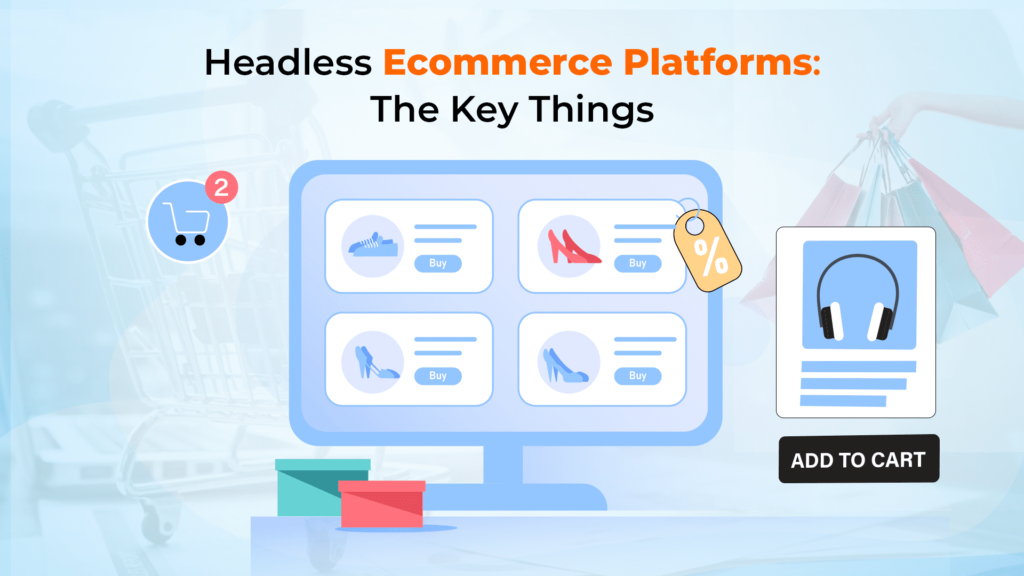
If you’re considering the best headless ecommerce platform for your store, integrating the best headless CMS for ecommerce could be highly advantageous, and there are a few things you should keep in mind:
1. You’ll Need a Frontend
Because headless ecommerce platforms separate the front end and back end, you’ll need to create a frontend architecture to display your products and interact with customers, often utilizing a headless CMS for content management and utilizing advanced frontend development techniques. This can be a custom-built frontend or a third-party frontend framework.
2. APIs are Key
To connect your frontend and backend in a headless ecommerce software setup, API-first approach are necessary. APIs establish communication rules for different software components. With a customizable online store, you’ll be relying heavily on APIs to ensure that your frontend and backend can talk to each other seamlessly.
3. Multi-Channel Support
Headless ecommerce platforms empower businesses to deliver their ecommerce experience smoothly across various channels and devices, such as web, mobile, social media, and voice assistants, among others. This can help businesses find new customers and give customers more choices.
4. Integration with Other Systems
Decoupled ecommerce systems can be easily integrated with other systems and tools, such as marketing automation platforms, CRM software, headless CMS, and analytics tools. When businesses combine their systems, they can improve their marketing and sales plans and learn more about how their customers behave. This helps them improve how they work and do even better.
Learn More: Headless Commerce Architecture: Discover The Future of Online Retail
How to Choose the Right Headless Ecommerce Platform
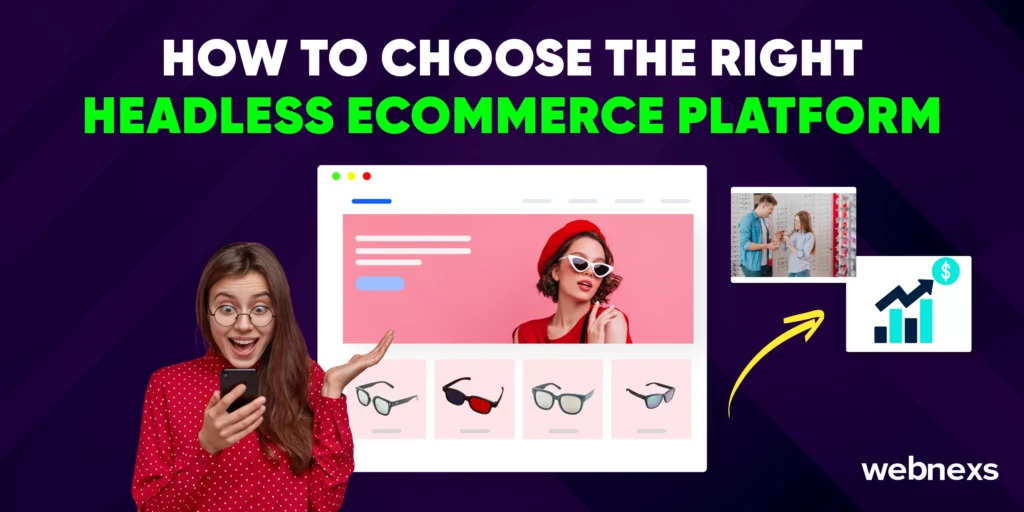
We’ve covered everything there is to know about headless ecommerce platforms. Now, let’s move on to the final and most important step: how to choose the right platform for your business. Don’t worry, we’ve got you covered on that too!
- Define Your Goals: Identify your business objectives, whether enhancing online presence, improving customer experience, or boosting sales. This will help you find the features you need from a headless ecommerce solution provider
- Look for Flexibility: Choose a platform that allows easy integrations and customizations, ensuring it meets your unique requirements.
- Prioritize Scalability: Select a platform that can grow with your business, handling more traffic and transactions as you expand.
- Ensure Omnichannel Support: Choose a platform that smoothly integrates with multiple sales channels, such as mobile apps, social media, and physical stores, to create a consistent experience for customers.
- Evaluate Technical Needs: Consider how well the platform fits with your existing systems and whether it’s user-friendly for your team.
- Check Customer Support: Opt for a platform with reliable support and resources, like documentation and community forums, to assist you through the transition.
Can a Headless Ecommerce Platform Support Omnichannel Experiences?
Absolutely! One of the primary advantages of headless ecommerce platforms is their capability to support omnichannel strategies. By decoupling the front end from the back end, platforms like Webnexs allow businesses to deliver a smooth shopping experience across various channels.
With a headless cms ecommerce, you can easily integrate multiple sales platforms, ensuring customers enjoy a unified experience whether they shop online, through a mobile app, or in-store. This approach not only enhances customer satisfaction but also fosters loyalty, as shoppers appreciate a journey customized to their preferences.
In summary, when selecting a headless ecommerce platform, keep in mind your business goals, the need for flexibility, scalability, technical requirements, and the importance of support. By utilizing the potential for omnichannel experiences with a solution like Webnexs, you’ll be well-positioned to establish a successful online presence.
Conclusion
As you explore the world of headless ecommerce platforms, it’s clear that they offer Huge potential for businesses looking to customize in today’s competitive field. With benefits like enhanced flexibility, scalability, and the ability to provide smooth omnichannel experiences.
What are you waiting for?
Take the Next Steps with Webnexs Headless Solutions!
If you’re ready to take your ecommerce strategy to the next level, consider partnering with Webnexs. Our headless solutions are designed to empower your business with the flexibility and tools needed to create exceptional shopping experiences. Whether you’re a startup or an established enterprise, our team is here to help you navigate the journey toward a more Flexible and customer-focused ecommerce environment. Reach out today to discover how we can customize a solution that fits your unique needs and your success.
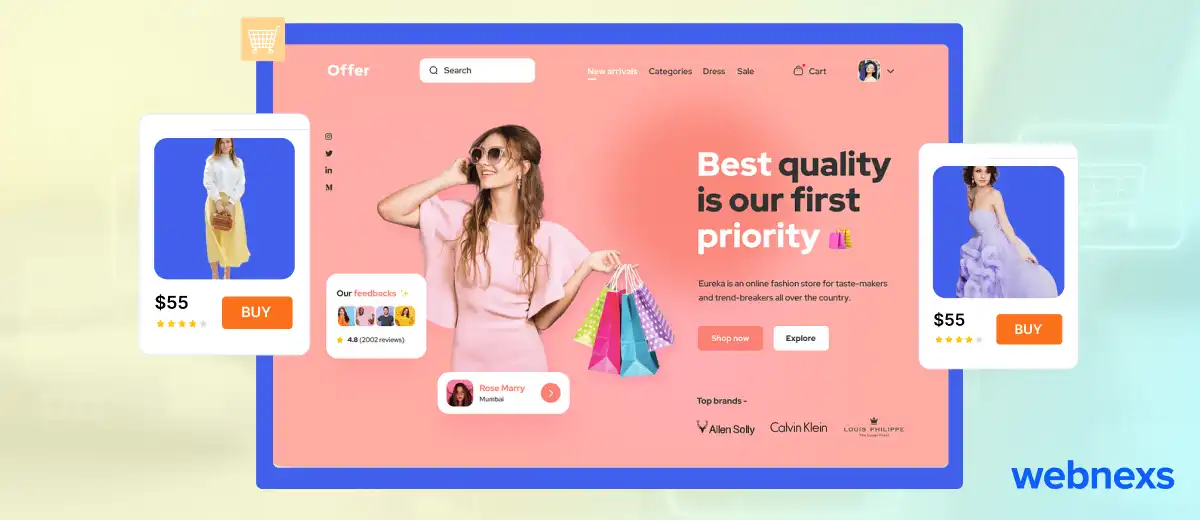

Leave a Reply